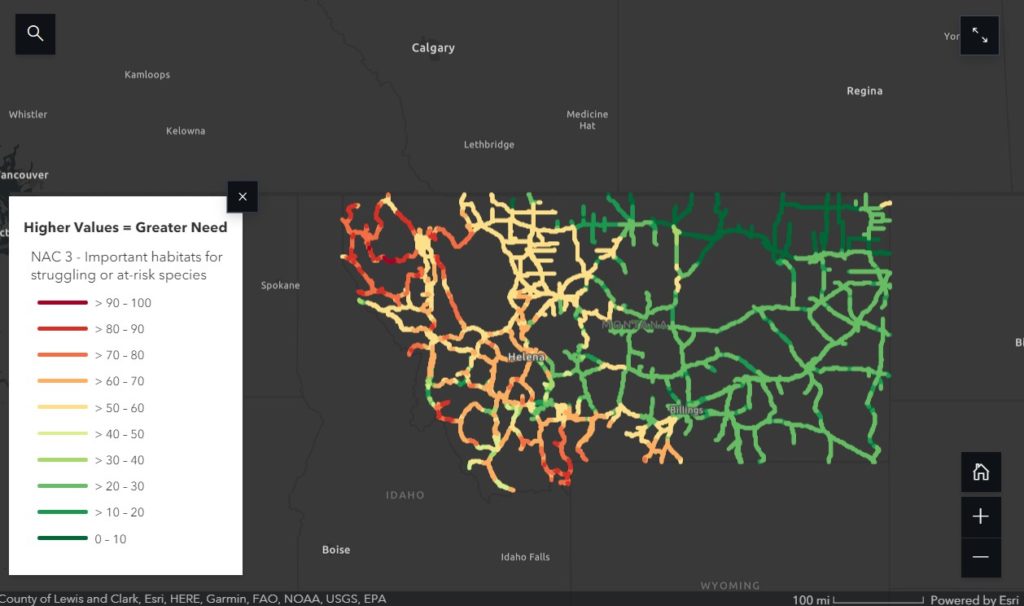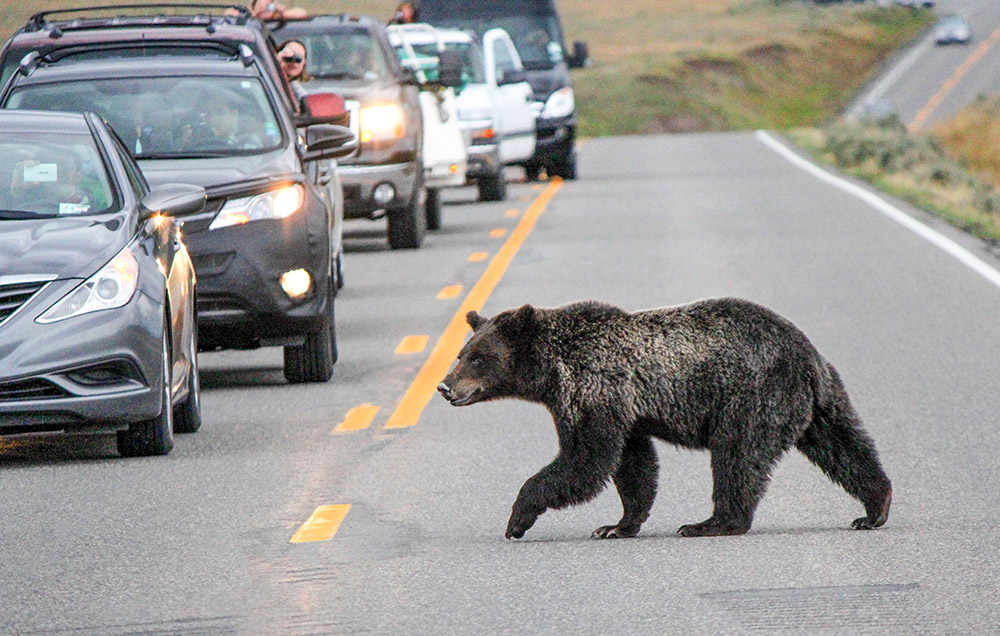Projects prioritize protection of wildlife movement and improve traveler safety
Yellowstone to Yukon Conservation Initiative (Y2Y) congratulates Montana Wildlife and Transportation Partnership on today’s announcement that brings state highways a step closer to being safer for wildlife and people.
Two new tools will help animals safely cross busy roads and protect the public from car wrecks by filling in the blanks on where wildlife cross the road and providing the funding and process to get wildlife crossings built. This is thanks to the hard work of everyday Montanans including scientists, conservation experts, government, and environmental non-profits such as Y2Y. The partnership is a group of representatives from the Montana Department of Transportation, Montana Fish, Wildlife and Parks (FWP), and Montanans for Safe Wildlife Passage.
One is a new way for the state to build individual transportation projects that improve wildlife movement. A new process that puts wildlife front and center in project development will provide a more direct path to address deadly wildlife-vehicle collisions with stand-alone solutions that work, such as fencing, overpasses and underpasses.
The other is an interactive map tool that combines important data on wildlife to identify areas of concern and help make sure wildlife overpasses and underpasses are built in the right places. This resource is important for state agencies and community members to better understand wildlife and transportation across the state.
Data collected will build the case for infrastructure in the most important, cost-effective places, and help plan appropriate projects including wildlife crossings and fencing. It will also be an important resource for community members seeking to propose and implement solutions at collision hotspots.

Courtesy: Montana Wildlife and Transportation Planning Tool
“We applaud this work. Montana’s actions show they are committed to helping people and wildlife get where they’re going, and keeping them safe in the process,” says Jessie Grossman, Y2Y’s U.S. program manager. “Y2Y is proud to be a collaborative partner in these projects that will help animals get across Montana’s busy roads.”
These innovative solutions prioritize the protection of wildlife movement and improve traveler safety. These projects come at a key time, as they are paired with an increase in federal funding for wildlife and transportation projects through the Bipartisan Infrastructure Law. This presents an immense opportunity to make wildlife safe passage a reality.
In Montana, drivers face one of the nation’s highest wildlife-vehicle collisions per capita. Each year statewide, maintenance crews collect more than 6,000 wildlife animal carcasses. Addressing the high rate of collisions improves wildlife connectivity but will prevent avoidable deaths — some jurisdictions have up to 95 percent reduction in accidents after crossings are built — and limit property damage, injuries and human fatalities.
Across the broader Yellowstone to Yukon region, there are major wildlife crossings projects such as those on Montana’s Flathead Reservation and Canada’s Banff National Park, that address the breaking apart, or fragmentation, of wildlife habitat by roads, railways and other infrastructure. More are needed and today’s advancement is an encouraging step in that direction.
Y2Y champions connectivity in conservation, inspiring solutions that benefit people and nature. To achieve this vision across the 3,400 kilometers (2,100 miles) between the Greater Yellowstone Ecosystem and Canada’s Yukon Territory, Y2Y protects core habitats, keeps these habitats connected, and inspires others to engage in similar work.


